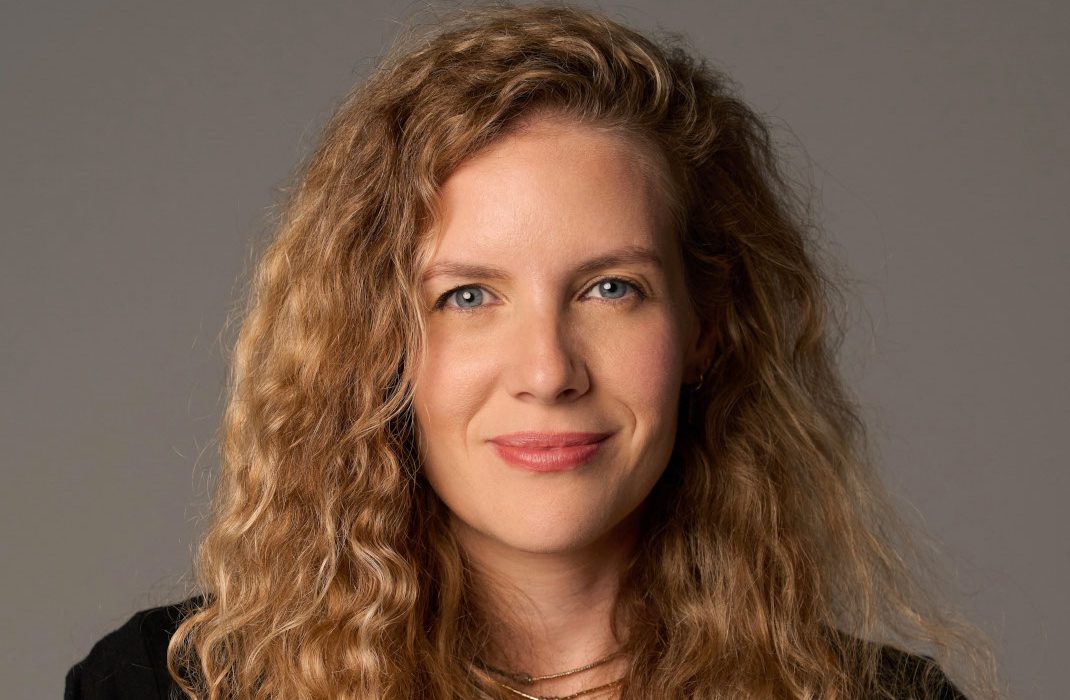“Tunisia occupies both a central and marginal place in contemporary conversations about African politics and society. It is central because it shares many of the continent’s challenges: a youth searching for meaning, economic crisis, political disillusionment, and migration”. – Amel Guellaty
By Jerry Chiemeke
More than a decade after the Tunisian Revolution sparked the Arab Spring, the promise of democratic transformation has given way to a sobering reality. Tunisia, once hailed as the sole success story of the Arab uprisings, has witnessed the return of authoritarian rule, leaving a generation of young people grappling with dashed hopes and diminished prospects.
It is against this backdrop of political regression and economic stagnation that Amel Guellaty sets her debut feature film, Where The Wind Comes From, a poignant coming-of-age story that captures the restless spirit of Tunisian youth refusing to surrender their dreams.
Guellaty, whose previous short films, Black Mamba (2017) and Chitana (2021), established her as a promising voice in Tunisian cinema, crafts an intimate portrait of friendship and aspiration through the eyes of Allysa (Eya Bellagha) and Mehdi (Slim Baccar). Allysa, burdened with caring for her younger sister due to her mother’s emotional absence, finds solace in her friendship with Mehdi, a talented visual artist frustrated by endless unemployment queues. Together, they navigate the suffocating limitations of their circumstances while nurturing dreams of escape and artistic fulfilment.
The film’s central narrative engine emerges when the duo discovers a drawing contest offering a six-month residency in Germany, an opportunity that represents not just career advancement but existential liberation. As they embark on a journey to Djerba to participate in the competition, their path becomes a microcosm of contemporary Tunisia’s challenges, with transport strikes and bureaucratic obstacles serving as constant reminders of the precarious sociopolitical terrain young adults must navigate.
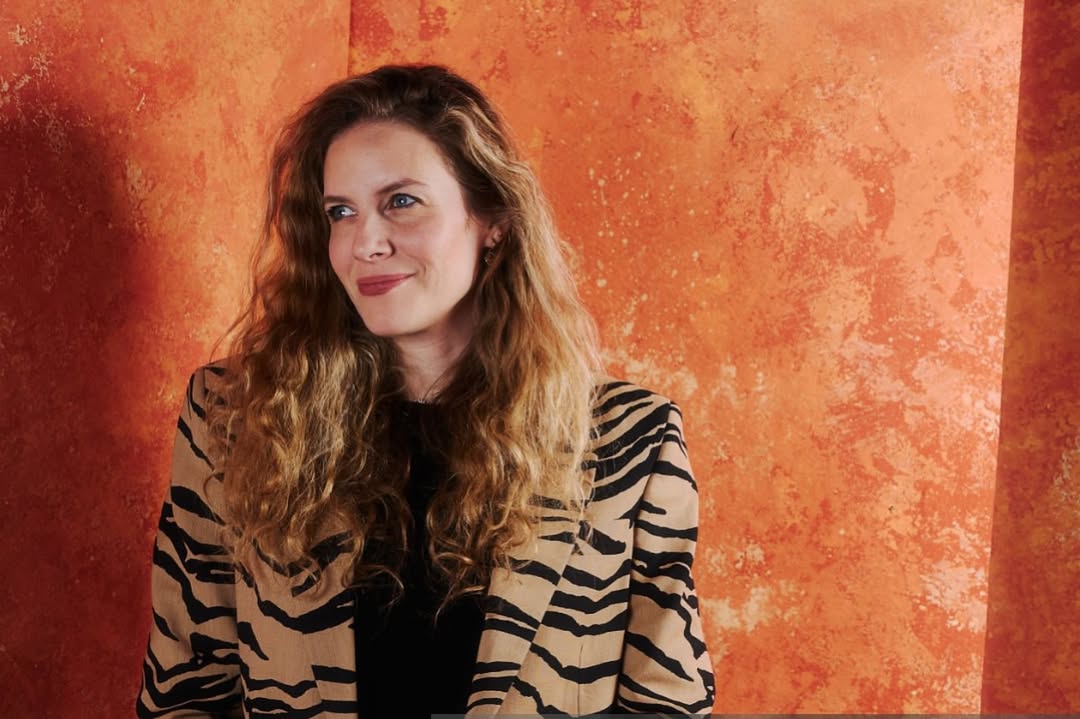
Amel Guellaty demonstrates remarkable skill in balancing the personal and political dimensions of her protagonists’ story. Through Allysa’s free-spirited libertarian philosophy and Mehdi’s more cautious idealism, Where The Wind Comes From explores not only the intricacies of friendship but also the broader tensions within Tunisian society. Allysa’s character arc particularly illuminates the persistent challenges of societal chauvinism and misogyny, while Mehdi’s metaphoric descriptions reveal a demographic desperately fighting to preserve its sense of wonder amid mounting disillusionment.
The performances by Bellagha and Baccar anchor the film with authentic chemistry that convincingly portrays a friendship bordering on the fraternal. Their quick-witted banter, heated exchanges, and shared silences underscore a near-filial bond that feels lived-in and genuine.
Regional music by Hamid El Shaeri, Yuma, Jawhar Basti, and Nagat Al-Saghira provides an evocative soundtrack that accentuates the emotional chaos of their journey, grounding the narrative in its specific cultural context.
The cinematography of Friday Marzouk (the film’s Director of Photography) becomes an integral component of the film’s emotional architecture: her careful attention to the interactions between the protagonists, particularly through intimate two-shots, creates a subtle visual language that enhances the story.
Amel Guellaty succeeds in presenting a nuanced portrait of modern Tunisian youth who refuse to be defined solely by their circumstances: the film’s central question—“If we can’t even dream, what’s left for us?”—resonates as both a lament and a rallying cry. Allysa and Mehdi embody a generation determined to “throw their hats in the ring” and defy convention in pursuit of their dreams, rather than wallow in victimhood. Effectively combining creativity and tenderness, Where The Wind Comes From powers across its 98-minute runtime to culminate in a spirited debut.
In an exclusive conversation, Afrocritik caught up with Guellaty just before the recently-concluded 2025 Mediterrane Film Festival to discuss the making of Where The Wind Comes From, sociocultural dynamics in Tunisia, and the country’s place in the broader conversation surrounding African storytelling.
How did your experience with making short films influence your approach to crafting this coming-of-age story?
Youth, or that fragile coming-of-age period, has always been central in my short films. In a way, Where The Wind Comes From is a continuation of those earlier explorations, but with more time to let the characters breathe, evolve, and contradict themselves. Aside from the time and energy involved, I found that making a feature and a short are, at their core, very similar experiences. Both are works you have to shape and grow, with a team to lead, a lot of stress, and a lot of love.
How did you balance depicting the sociopolitical challenges in Tunisia with the personal journeys of Alyssa and Mehdi?
It was important for me to create a movie that addresses the real struggles in Tunisia, the socio-economic problems, and the lack of hope faced by the younger generations. But I didn’t want to write a dark, political film. I wanted to portray a beautiful generation, full of talent and humour, a generation I truly admire for its resilience, so it was essential to find a balance between the emotional depth of the relationships between the characters, and the harsh reality they face. They are the story; the social and economic issues are the backdrop. In a way, Tunisia itself is the antagonist in the film, sometimes preventing them from growing or moving forward.
What inspired you to focus on the dynamic between Alyssa and Mehdi, and how did you work with Eya (Bellagha) and Slim (Baccar) to achieve such authentic chemistry?
As a girl who grew up with many close male friends, friendships that were very dear to me. I wanted to explore that kind of relationship, which is rarely represented in cinema. Most of the time, male/female dynamics are reduced to love stories. But for me, those friendships were essential. They’re different from same-sex friendships: sometimes hard, sometimes awkward, but most of the time, they’re beautiful and meaningful, and I wanted to celebrate that.
Working with Eya and Slim was easy; they already respected each other’s work. We rented a beach house for a few days and spent time together watching movies and rehearsing. We rehearsed a lot and tried to spend as much time together as possible before the shoot, to make sure their relationship felt natural. And that’s how they actually started becoming friends, getting to know each other, and building a connection both on and off set.
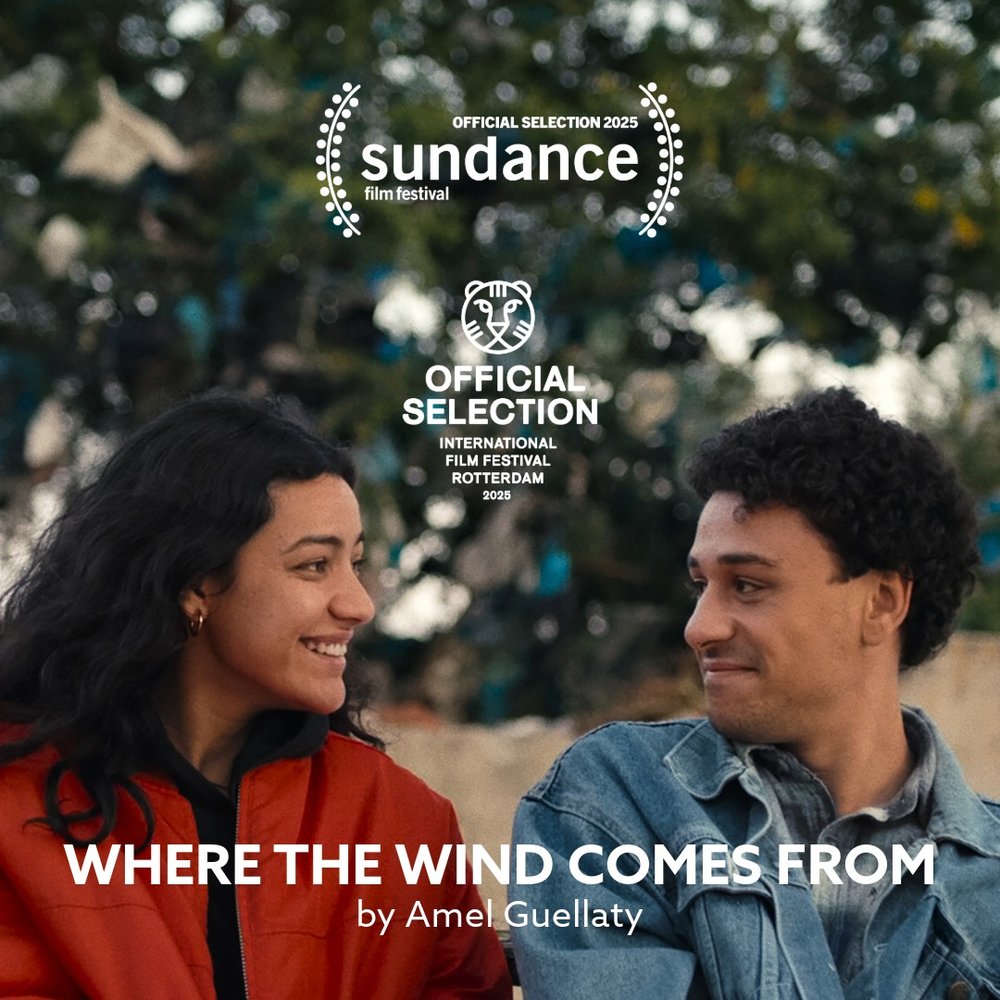
The drawing contest with a residency in Germany serves as a pivotal plot point. What made this a compelling narrative device to explore the characters’ dreams and the barriers they face in Tunisia?
Unfortunately, many young people in Tunisia feel there’s no future for them in their own country, and they dream of leaving. They chase the so-called ‘European dream’ even though living conditions in Europe are increasingly difficult and racism is on the rise; they still believe the grass is greener on the other side.
For them, this contest becomes a way out, a step toward what they imagine as a better life. It becomes a driving force but also a symbol of Tunisia’s failure to offer its youth a reason to stay. This is especially true in the art world, which remains highly elitist and offers little financial reward.
Alyssa’s free-spiritedness contrasts with Mehdi’s idealism, creating tension in their friendship. How did you approach writing these contrasting philosophies to reflect broader themes in Tunisian youth culture?
I wanted to write characters that challenge clichés often associated with the Arab world, the submissive, voiceless woman and the authoritarian, aggressive man. These stereotypes simply don’t reflect the reality in Tunisia, where women enjoy a relatively significant degree of freedom, not complete, of course, but I believe complete freedom for women doesn’t exist anywhere in the world. Tunisian women are known for their strength and independence, and Alyssa embodies that.
She’s free, assertive, and fights for many things, but never for the right to be who she is. Mehdi, on the other hand, is sensitive and introverted, representing a more modern and complex masculinity. Their personalities are different but complementary, and through them, I wanted to reflect the diversity and depth of Tunisian youth, beyond the usual political or cultural binaries.
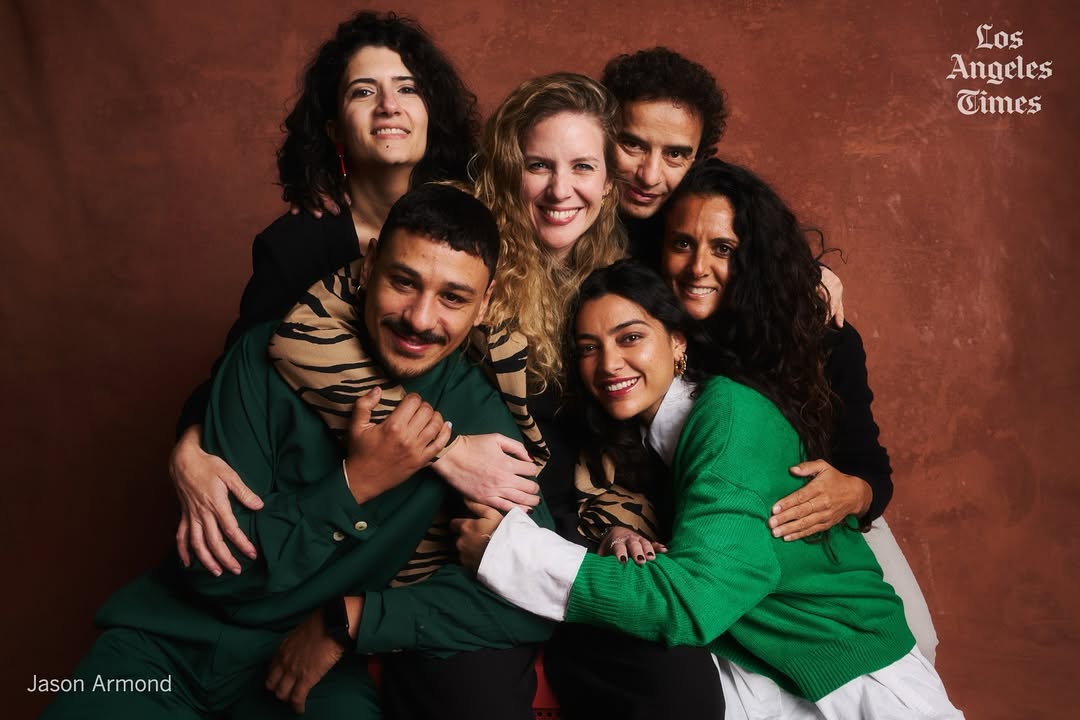
Can you share your process for selecting the soundtrack and its role in shaping the film’s emotional tone?
That was a fun but also quite complex process. I had some original music composed specifically for the film by Omar Aloulou, a talented composer who also worked on Black Mamba. But for the rest of the soundtrack, I wanted to use music from the region, songs that young people actually listen to, music that feels like the characters: modern, but still rooted in local culture.
Most of the artists are Tunisian, like Yuma, Jawhar, Nour Harakati, Cosmic, and 4lfa. Since it’s a road trip, music plays a central role in setting the rhythm and emotional tone of the film. Securing the rights was a real struggle, but since the premiere, many people have shared how much they loved the soundtrack, so I’m really happy about that.
How did you collaborate with Marzouk to visually capture the protagonists’ relationship and the broader Tunisian landscape?
From the beginning, we wanted to avoid a traditional shot/reverse shot structure. The idea was to keep both characters in the frame as often as possible, unless they were in conflict. Frida and I also wanted to give space to the landscape, to let Tunisia itself breathe in the frame. That’s why we used a lot of wide angles. I love lines and geometric compositions, and since Frida had worked extensively with handheld cameras in the past, she was also excited to explore a different visual grammar.
We worked closely together: she focused particularly on the light, while I, being a photographer myself, was very involved in the composition. I had a clear vision of how to use the frame to express the emotional bond between the characters, often placing them at the bottom of the image and leaving space above them, like space for their dreams.
What message did you hope to convey to Tunisian audiences, particularly young viewers, through this story?
I hope that Tunisians will recognise themselves in the story, their humour, their struggles, their contradictions, and their reality. The goal isn’t to deliver a message, but to make them feel seen and heard. Everyone will take away the message they need to.
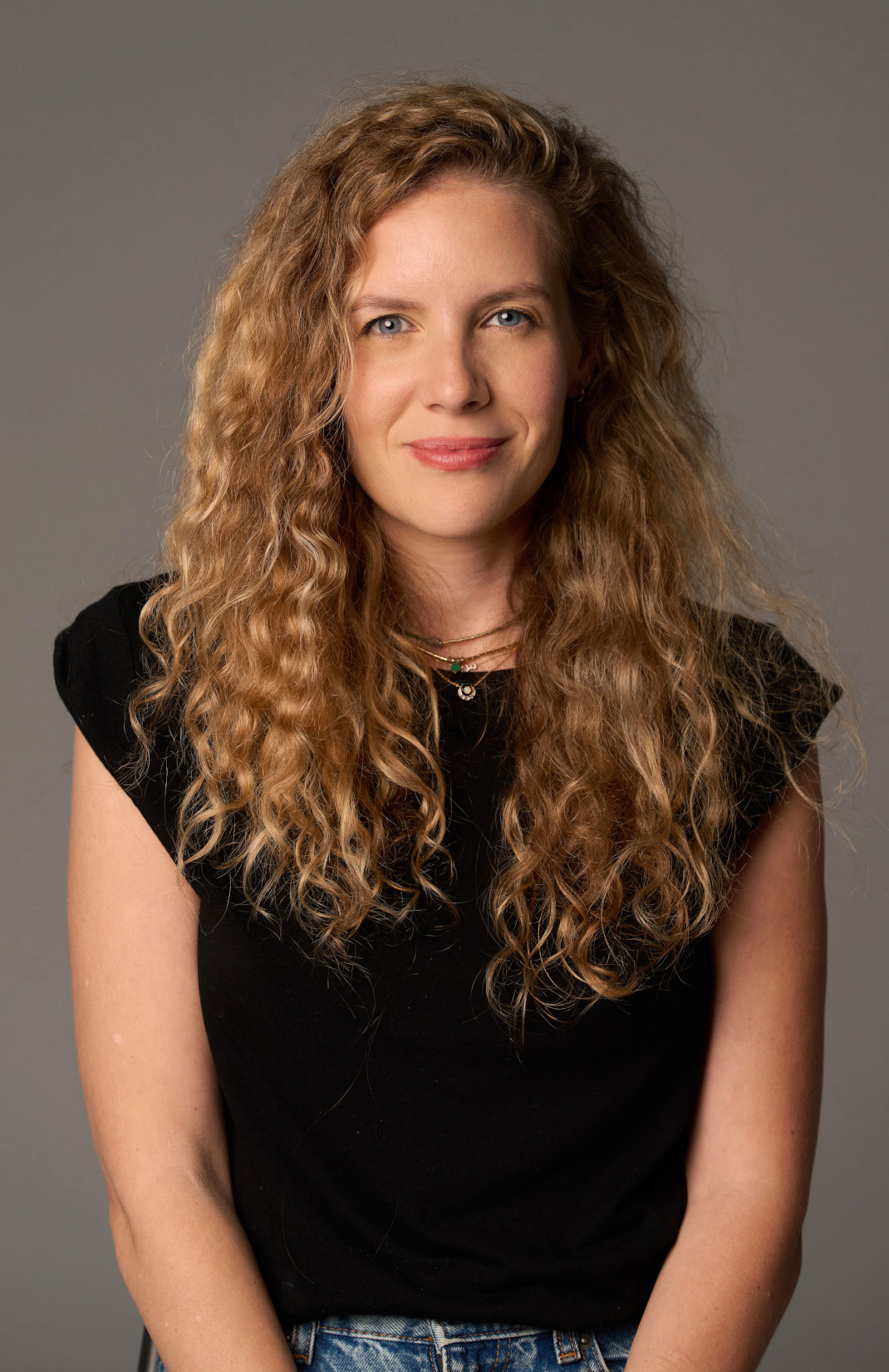
Given the overarching themes that play out in Where The Wind Comes From, in what ways would you describe Tunisia’s place in modern conversations around African politics and society, particularly given the delicate nature of the “Arab-Sub Saharan Africa” dichotomy?
Tunisia occupies both a central and marginal place in contemporary conversations about African politics and society. It is central because it shares many of the continent’s challenges: a youth searching for meaning, economic crisis, political disillusionment, and migration. But it is also marginal, because it is still too often perceived, both from outside and within Tunisia, as being outside of Africa, in a “made-up” Arab continent. That is a view I do not share.
Where The Wind Comes From is, among other things, an African film. One thing is certain: making a film anywhere in Africa is a struggle. And I hope that young people everywhere, whether in Africa or elsewhere, can see themselves in this story, which I believe carries universal values and questions. Tunisia shares with the rest of the African continent the same richness: its youth, its energy, and its determination to build a better future, one that is both modern and grounded in rich cultural roots.
Where The Wind Comes From first premiered in the World Dramatic Competition at the 2025 Sundance Festival, followed by a European premiere at the International Film Festival Rotterdam. It has gone on to clinch multiple accolades, including A Best Feature win at the Mediterrane Film Festival and a Nakheel Jury Award for Best Feature film at the Toronto Arab Film Festival.
Jerry Chiemeke is a Nigerian-born writer, film critic, journalist, and lawyer based in the United Kingdom. His writing has appeared in Die Welt, The I Paper, The Africa Report, The British Blacklist, Berlinale Press, The Johannesburg Review of Books, Culture Custodian, Olongo Africa, and elsewhere. Chiemeke’s work has won or been nominated for the Pushcart Prize, Ken Saro Wiwa Prize, Diana Woods Memorial Award for Creative Nonfiction, Best Small Fictions, and the Quramo Writers Prize. He is the author of the critically-acclaimed short story collection, Dreaming of Ways to Understand You.


